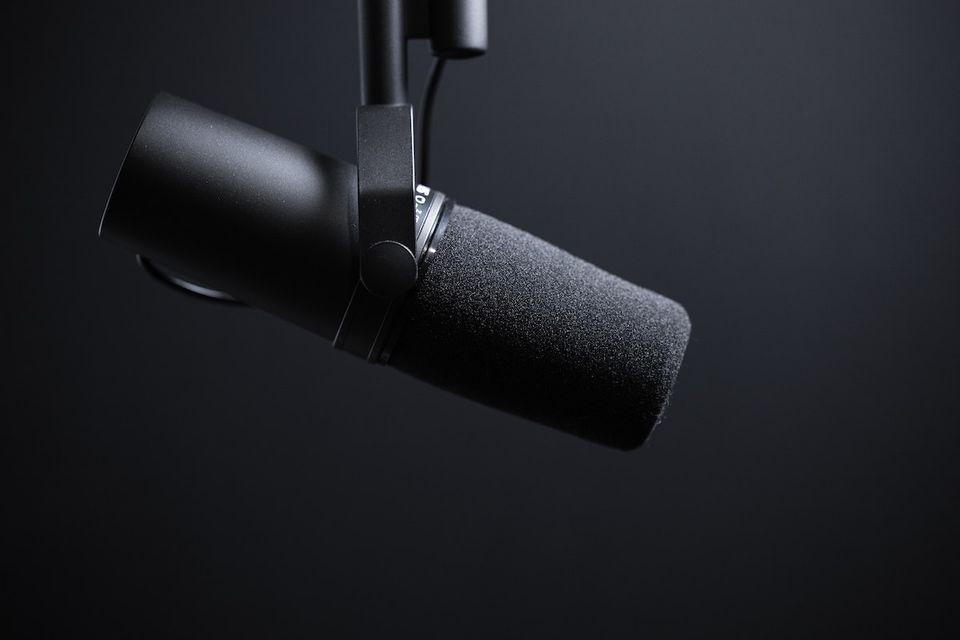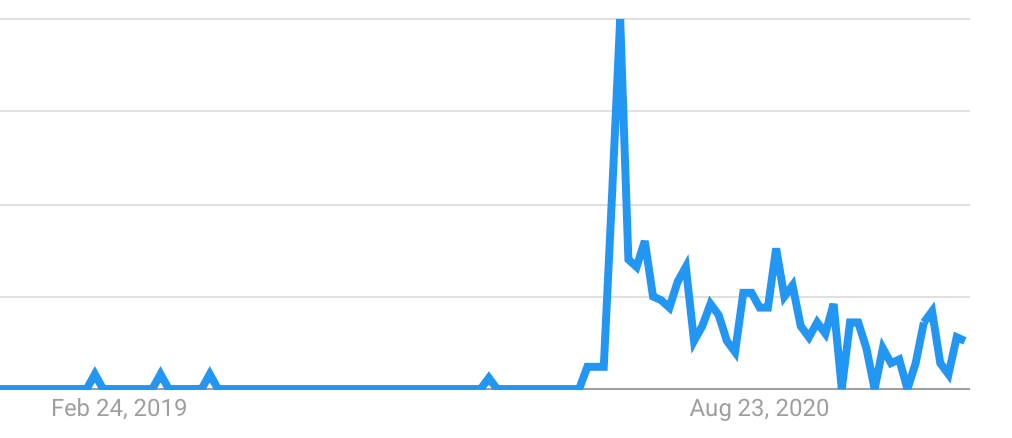You don't need video. Audio calls may be enough.

Telling a business partner you’d be competing with them would never be easy, especially when both businesses still needed to work together.
So imagine a young Bill Gates telling Steve Jobs that Microsoft was building Windows and competing directly—on an operating system level, at any rate—with the Macintosh.
“We had to take a walk,” relayed Gates decades later to Jobs’ biographer Walter Isaacson. Jobs started the meeting taking Gates to task for building what he saw as a rip-off of Apple’s work—where Gates countered both companies had worked off Xerox’ innovation. The meeting was going nowhere. And so Jobs had to get out of the office, asked Gates to go for a walk. Maybe it was the clean air, the open sky, the grounding effect of nature. But it worked: “That was when he began saying things like, ‘Okay, okay, but don’t make it too much like what we’re doing,” recalled Gates. Crisis averted, at least momentarily.
In the intervening years, as Jobs’ vision of a friendly computer and Gates’ of a computer on every desk morphed into today’s always-on computing, we all left the office. We took our word processing and coding, emails and chats, Photoshop and spreadsheets, into coffee shops and lunch queues. We’d think of things that needed done and do them all, anywhere.
All, that is, except meetings. Simply by virtue of computers and phones including cameras, video calls became the standard for remote meetings. It’s harder if anything to start a group voice call today; video reigns supreme in the workplace.
Thus my momentary surprise when, sometime in 2017, my editor started our weekly 1-1 meeting in Slack. My phone buzzed with a Slack notification, I tapped it, and seconds later I was on what seemed like a phone call—voice, with no video. Slack, thoughtfully enough, starts voice calls by default. Video’s a button tap away if you need it, but you might not. I brought the phone to my ear and we chatted about work and goals, no video or even headphones needed.
Maybe we didn’t need video calls for everything. Maybe audio is enough. And maybe it could get us over our collective Zoom fog.
This is what you want, this is what you get.

“Through television and telephony we shall see and hear one another as perfectly as though we were face to face, despite intervening distances of thousands of miles,” predicted the original Tesla in 1926, imagining a future smartphone small enough, “a man will be able to carry one in his vest pocket.”
The future came, sure enough. We got Twitter instead of flying cars, but video calls came almost exactly as they’d been imagined. If phone calls had revolutionized communications, video calls would surely do even more.
We were so excited about video calls being possible, we collectively rushed into a future that neglected audio calls, with video being the default way to talk in Skype, Messenger, FaceTime, and more. “In some ways we kind of skipped over audio on the internet,” Capiche founder Austin Petersmith remarked to Protocol’s David Pierce. “The amount of experimentation of video is orders of magnitude more than audio, and I think that's because there's a tendency to go toward the highest-fidelity thing available.”
When every phone comes with a camera, surely we should use it.
“We shall see and hear one another as perfectly as though we were face to face.”
Or perhaps not. Around the same time IBM added the first webcams to laptops in 1996, author David Foster Wallace in Infinite Jest imagined a world where we’d try video calls, then decide they were more trouble than they were worth.
Traditional phone calls, to Wallace, were brilliant for the information they withheld, the fiction they created. “Good old traditional audio-only phone conversations allowed you to presume that the person on the other end was paying complete attention to you,” wrote Wallace. We could do anything, look any way you wanted, and the person on the other end of the line would be none the wiser.
Video calls, he predicted, “rendered the fantasy insupportable.” We’d had to perform for the call, act like we were looking at the speaker, look presentable at the last moment. “There was … no answer-as-you-are informality about visual-video telephone calls.” And perhaps that's what we liked about phone calls all around, without realizing it.
And so, in Infinite Jest’s imagined world, humanity would switch to video calls for a year, then quickly shift 90% of calls back to audio-only.
After a year where everything important has been held over video calls, it feels like Wallace may have not been too far off the mark.
Mirror, mirror on the screen

It turns out, it’s tiring, being on camera all day.
You have to look at the camera, fake eye-contact with the speaker. But “in real life, how often do you stand within three feet of a colleague and stare at their face? Probably never,” surmised Liz Fosslien and Mollie West Duffy in the Harvard Business Review. “Having to engage in a ‘constant gaze’ makes us uncomfortable — and tired.”
You have to perform, keep up appearances, seem engaged and attentive. “When you're on a video conference, you know everybody's looking at you; you are on stage, so there comes the social pressure and feeling like you need to perform. Being performative is nerve-wracking and more stressful.” As the BBC quoted INSEAD professor Gianpiero Petriglieri: “You cannot relax into the conversation naturally.”
"When you're on a video conference, you know everybody's looking at you; you are on stage."
And for all your effort, tech too often gets in the way. Your mic may not work, your video call app might crash, a siren might go by right as you need to talk. Even a slow internet connection can make you come across worse to your colleagues, as a 2014 study by Berlin Institute of Technology researchers found that when the audio is delayed more than 1.2 seconds, participants “are perceived less attentive, extraverted and conscientious.”
You’re performing. You’re trying to decipher unclear facial cues. Add context collapse—where every event happens in the same space, without the familiar separation between work and leisure spaces—and your brain never has time to turn off. All that together gives us “Zoom fog,” the mental blurriness after one too many video calls, and the dread of needing to do more.
Call me. Video, maybe.
And so, just as remote meetings are more common than ever, Infinite Jest's prediction that we might “actually prefer the retrograde old low-tech Bell-era voice-only phone interface after all” is new trend in the remote startup world, at least.
“Video makes many conversations worse,” Tweeted Basecamp CEO Jason Freed recently, after decades of experience leading one of the first remote companies.
He’s not alone. The Gumroad team is switching meetings to audio talks after founder Sahil Lavingia says they found “Video is largely unnecessary.” “We almost never use our cameras for internal meetings,” shared @MikeRaia in a Capiche discussion about video call defaults, where @briana9 mentioned “My team is mostly video off.”
We might actually prefer the retrograde old low-tech Bell-era voice-only phone interface after all.
Hiten Shah—founder of CrazyEgg, KISSmetrics, and FYI—shared that “having remote meetings while walking” and “sitting in nature during a meeting” were some of the things he does to make remote work more healthy, tips one suspects Jobs might have enjoyed. You could walk during video meetings, at the risk of making your team seasick—switch to audio calls, though, and you can move as much as you please.
You could even take it to the logical extreme and drop meetings altogether. Todoist founder Amir Salihefendić mentioned that his favorite company perk is “Async-first. This enables you to live wherever and work when it suits you.” You could share your thoughts in Slack or record them in tools like Yac, and rethink if meetings are even necessary. Or, go in the other direction, and use something like Discord with always-on audio chat in the background to talk whenever you want, spontaneously.
Whether spontaneously, location-independent meetings are what your team needs, or working more async, audio’s part of making it happen. You can turn off the camera, relax a bit more on calls, and think more about what’s being said and less about how you look while you’re saying it. You could take a walk, or take the call from wherever you happen to be at the moment, when video's no longer a requirement.
It's part of the enduring appeal of radio shows and podcasts—you can listen and learn while doing other things, without being glued to a screen for yet another hour. Where video ties us down, audio lets us do more, frees us to work the way that fits best without performing for the camera. We can talk on Facetime Audio and Slack calls, host live audio shows on Capiche FM and more, all with just a microphone.
Sometimes more isn’t better. Sometimes less data can be more.
